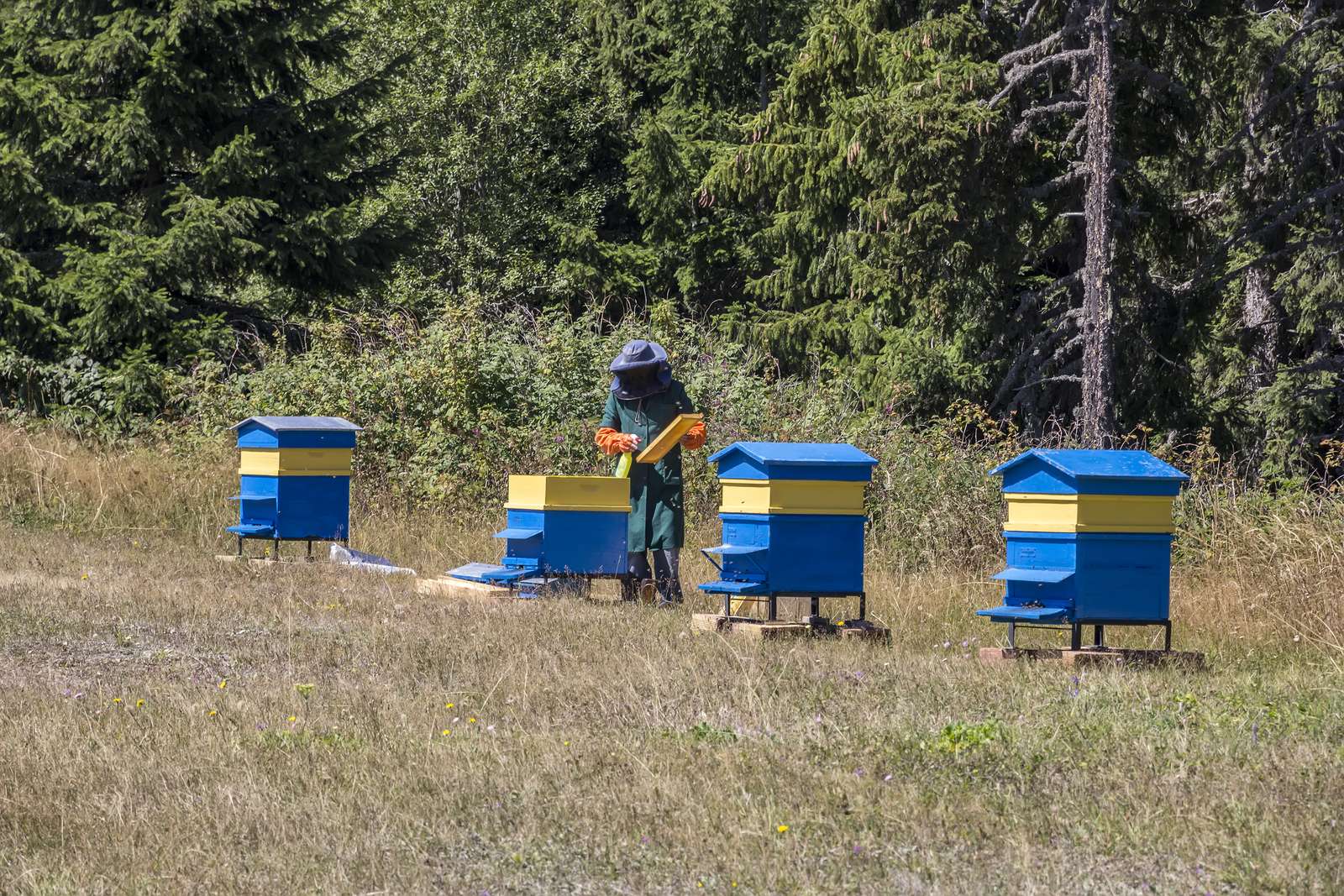A good question to ask when starting beekeeping is how many acres you will need for keeping bees. Determining the space you need requires taking several factors into account, such as local laws, safety, and available forage, among other factors.
You can keep bees on a property as small as a quarter acre, but you will be limited to the number of bees you can safely accommodate on the land. Available forage, safety, local laws, traffic zones on the property, and the position of buildings will limit the number of colonies on the land.
When planning your apiary site, you must plan the number of bees that can be accommodated in your available space, considering all the relevant factors. Follow our guidelines to prevent overpopulation of your space and keep your bees healthy and happy.
What Size Land Do You Need For Beekeeping?
Is the amount of land you have going to restrict your beekeeping? The basic answer is yes because only a certain number of hives can be accommodated in a given area.
Will these limitations prevent you from keeping bees in a small area? The most restrictive aspect which may prevent you from keeping bees at all is the local laws in your area. Most cities have laws regarding whether bees may be kept in certain city zones.
If you live within a zone where beekeeping is not allowed, you will not be able to keep bees, no matter the amount of land or space available to house them.
In most cases, you would be able to keep at least one beehive on your property, depending on the land size, but you must check this with your local authorities. We have several articles detailing the beekeeping laws in certain areas, such as “Beekeeping Laws In Tennessee,” which give some guidelines regarding local beekeeping laws.
Even where the local laws allow beekeeping in your zone, the number of hives may be restricted based on the size of the property.
Some municipalities, such as Virginia Beach, use the following guidelines for the number of beehives allowed on a property.
- ¼ acre or smaller. Up to a total of 2 permanent beehives are allowed.
- ¼ to ½ acre property. Up to a total of 4 permanent bee hives are allowed.
- ½ acre to 1-acre property. A maximum of 6 permanent bee hives are allowed.
What factors other than the legalities restrict the number of beehives you can keep on your property?
Available Forage For Your Bees
You may have 20 acres of land outside your back door, but if you do not have forage on those 20 acres that can support your bees, your bees will starve if you put too many bees on the property.
This premise holds true for any size piece of land. The number of bees you can place on any property will be influenced by the available plants in the area that produce nectar and pollen.
When you become a beekeeper, you must also become a farmer, a woodworker, and a botanist! Knowing the plants in your area is a crucial piece of the knowledge required to be a beekeeper.
Scout around the area where you will locate your apiary to determine the types of plants available that will provide both summer and winter forage for your colonies.
Suburban gardens are usually a great source of forage since many neighbors often have a wide variety of plants that flower in various seasons of the year. If the pickings are slim for your bees, plant forage for your bees in your own garden.
Rural areas can often be more challenging for bees. They must fly further away from their home base to locate sufficient food and resources for the colony.
The basic rule is the more forage available for bees in the area, the higher the density of beehives you can keep on your property.
Overstocking your apiary site with hives can be counter-intuitive and yield a lower honey crop than having fewer hives on the site.
Overstocking with colonies is a requirement for pollination services for commercial beekeepers on certain crops, but for honey production, slightly under-stocking the area with bee hives yields better results.
Selecting A Low Traffic Zone For Your Beehives
Beehives require a low foot-traffic area in your garden to prevent unnecessary disturbance of the bees and for the safety of people in your garden.
The general rule of thumb for beehive space is at least a 5-foot distance around the beehives in your apiary site should be cordoned off to limit foot traffic around the hives. The more hives you have, the greater the 5-foot perimeter will eat into your available space, factoring in a minimum of 2.5 feet between beehives.
This can take a sizable chunk out of the usable area of your garden and can limit the number of hives you can accommodate on your property.
Bear in mind your outdoor entertainment areas and the proximity of the bees to these outside spaces you like to use with your family. If your bees are too close to these areas, your bees could be aggravated by the close proximity to people.
Sunlight and shade are other requirements to consider for your colonies. Not all areas of your property may be suitable to provide morning sun and afternoon shade for your bees. This limitation can reduce the number of bees you can practically keep on your property.
Placing beehives in a location that is not good for the bees can cause them to die off or abscond and desert the beehive to find a better place to live.
Your House Position Can Limit Beekeeping Operations
The position of your house on your property can limit your beekeeping. If your property is small and your house is in the middle of the property, there may not be sufficient free yard space around your house to accommodate many hives.
What is the best house location for beekeeping? The ideal location of a house on a property would be at one end of the property, leaving a wider open space on the land to accommodate beehives without them being in close proximity to your house.
Spread Of Disease In Overcrowded Apiary Sites
Placing too many beehives in a single location can not only be a problem due to limited forage but can also result in the spreading of pests and diseases between the colonies at a rapid rate.
Limiting the number of hives in any one location will reduce the risk of all your hives becoming contaminated with pests or diseases.
Options For Keeping More Bees
What can you do as a beekeeper if you are limited to the number of hives on your property but want to expand your operation?
You can search out alternative apiary sites on the property of friends and family and offer to share some of the honey harvests with them as payment for hosting your beehives.
Some people will welcome a beehive or two on their property that will benefit their vegetable crops or garden flowers and also receive some honey.
Approach people with larger properties on the outskirts of town where larger numbers of bee hives can be accommodated. Offer them a similar trade-off of a portion of the honey harvest for the use of their space.
If the landowner does not use the corner of the property, the deal becomes even more attractive. The only negative to this arrangement is that you must travel to multiple apiary sites to manage and inspect hives and harvest honey.
Conclusion
The amount of land you need to keep bees can be relatively small, but the smaller the land, the lower the number of bee colonies the land can support.
Practical aspects such as resource availability and safety are key, but local by-laws and state limitations may also restrict the number of hives depending on the size and zoning of the property.
References
https://mountainsweethoney.com/how-many-hives-can-you-have-on-your-property/
https://cals.cornell.edu/pollinator-network/beekeeping/beekeeping-basics




